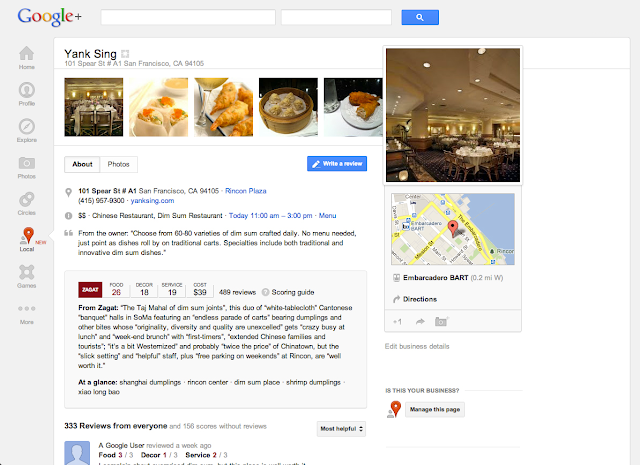[Cross-posted from the
Google Science Fair Blog]
Congratulations to the regional finalists of the second
Google Science Fair! These
top 90 entries from around the world represent some incredibly innovative and groundbreaking science.
This year’s competition was even more international and diverse than last year. We had thousands of entries from more than 100 countries, and topics ranging from
improving recycling using LEGO robots to
treating cancer with a substance created by bees to
tackling meth abuse. Our
judges were impressed by the quality of the projects, and it was no easy task to evaluate the creativity, scientific merit and global relevance of each submission to narrow down the entries to just 90 finalists.
Thirteen of our 90 finalists have also been nominated for the
Scientific American Science in Action award, the winner of which will be announced on June 6 along with our 15 finalists. These top 15 and the Science in Action winner will be flown out to Google’s headquarters in California in July for our celebratory finalist event and for the last round of judging, which will be conducted by our panel of
renowned scientists and innovators.
Now, let’s get excited for the results!
The regional finalists in each of the three age categories are:ASIA (Age 13 - 14)Sadanand Patil, India
Utkarsh Gupta, India
Anjan Venkatesh, India
Aravind Muraleedharan, India
Nitya Raju, India
Aditya Jain, India
Sumit Singh, India
Ayushi Khedkar, Shraddha Kukade, Pournima Shinde, India
Nihar dalal, India
Shravan Patankar, Abhishek Dedhe, India
ASIA (Age 15 - 16)Ivan Jie Xiong Ang, Malaysia
Marco Ochsner, Ludwig Hruza, Singapore
Edith Loo, Li Yin Tan, Singapore
Rohit Fenn, India
Hamza Azhar, Pakistan
Benjamin Chan, Paul Jeanbart, Singapore
Xi Xu, China
Scott Guan, Cher Yeoh, China
May Ning Law, Shi Hui Ang, Ruixin Ng, Singapore
Akshat Boobna, India
ASIA (Age 17 - 18)Shaoxiong Luo, Singapore
Mark Borris Aldonza, Philippines
Geoffrey Tanudjaja, Singapore
Michael Teoh, Singapore
Shan Tan, Singapore
Wenqing Yan, Ronghui He, Singapore
Chung Kyu Kim, Ho Shin Cho, Joo Hee Lee, South Korea
Raghavendra Ramachanderan, India
Kay Yi Low, Singapore
Wataru Ogasa, Takeshi Kitagawa, Youta Nakagawa, Japan
EMEA (Age 13 - 14)Sakhiwe Shongwe, Bonkhe Mahlalela, Swaziland
Carlos Vega García, Spain
Natanel Levis, Israel
Marcin Pitek, Poland
Ana María Santos Espósito, Spain
India Hannon, Naomh Hannon, Isabelle Bond, England
Isabel Medrano Sáinz, Spain
Anthony Carmoy, France
Alexey Kozlov, Milena Klimenko, Ukraine
Ralph Moran, Ireland
EMEA (Age 15 - 16)Artem Mosiyenko, Javed Lindner, Germany
Mohammed Al Eydan, Saudi Arabia
Pablo González Recio, Alvaro Cuevas Alvarez, Alejandro Sánchez Lechón, Spain
Shahd Al Jasser, Saudi Arabia
Iván Hervías Rodríguez, Marcos Ochoa, Sergio Pascual, Spain
Gonzalo Balbás Moñivas, Spain
Judith Calvo Rull, Spain
Omar Obeya, Egypt
Karsten Roth, Germany
Menna AbdelGawad, Saudi Arabia
EMEA (Age 17 - 18)Danijar Hafner, Germany
Eugen Hruska, Germany
Till Speicher, Paul Georg Wagner, Germany
Ibrahim Khalil, Egypt
Eduardo Sancho Calzada, Alejandra Bargues Carot, Laura García Marco, Spain
Muireasa Carroll, Mairéad Kingston, Denise Hurley, Ireland
Melvin Zammit, Malta
Abdallah Reda, Egypt
Adrián Díaz, Sandra Garrido Romero, Spain
Philip Glass, Callum Middleton, England
The Americas (Age 13 - 14)Kriti Lall, USA
Anirudh Jain, USA
Jonah Kohn, USA
Mark Liang, USA
Andrew Chen, USA
Raymond Wang, Canada
Garima Singh, USA
Arjun Mahajan, Maya Flannery, Jonathan Berman, USA
Suruchi Ramanujan, USA
Martin Schneider, Joshua Li, USA
The Americas (Age 15 - 16)Kimberley Yu, Phillip Yu, USA
Natalie Ng, USA
Rishabh Mazmudar, USA
Emily S. Wang, Trevor Wang, USA
Joshua Meier, USA
Catherine Wong, USA
Katherine Zimmerman, USA
Sabera Talukder, USA
Grace Brosofsky, USA
Alejandro Andres Fuentes Herrera, Chille
The Americas (Age 17 - 18) Daniel Wang, USA
Brittany Wenger, USA
Yamini Naidu, USA
Karen Resnick, USA
Grace Pan, USA
Yuhao (Danny) Huang, Canada
Blake Smith, Vickram Gidwani, USA
Pascal Gendron, Canada
Yassine Bouanane, Canada
Ricardo Enrique Alba Torres, Jessica Alba Torres, Colombia
The Scientific American Science in Action Award nominations are:Anjan Venkatesh, India
Sumit Singh, India
Geoffrey Tanudjaja, Singapore
Sakhiwe Shongwe, Swaziland
Carlos Vega García, Spain
Mena Abdel Gawad, Saudi Arabia
Mark Liang, USA
Andrew Chen, USA
Catherine Wong, USA
Sabera Talukder, USA
Grace Brosofsky, USA
Ricardo Enrique Alba Torres, Jessica Alba Torres, Colombia
Katherine Zimmerman, USA
Thanks to all of the students around the world who submitted projects to the Google Science Fair and congratulations to all the young scientists who were selected as regional finalists.
Posted by Sam Peter, Google Science Fair Team
Missed registration this year? Click here to sign up for a
notification when registration opens for the Google Science Fair 2013.






.png)




